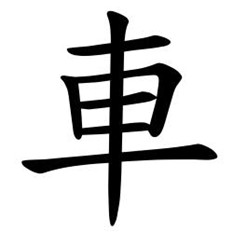One Hundred Unorthodox Strategies – 8. Chariots (Che, 車)
Whenever engaging cavalry or infantry in battle on broad plains or expansive wastes, you must employ rectangular, enclosed chariots and deer-horn chariots in square formations. Then you will be victorious because they will furnish the means to control the expenditure of energy, provide a defense to the fore, and organize and constrain the regiments and squads of five. A tactical principle from the “Questions and Replies” states: “On expansive terrain employ chariot formations.”
(Translation by Ralph D. Sawyer)
Notes:
· The title “Chariots” (che, 車), refers to the ancient war chariot, which had a crew of three: a charioteer (御者), an archer (射), and a halberdier (戎右). By the time of the Han they were mainly used as command posts, although heavy-armored types were used for combat.
· The quote from “Question and Replies” (fa yue, 法曰) is from the “Questions and Replies Between Tang Taizong and Li Weigong“ (唐太宗李衛公問對).
Original Text:
凡與步、騎戰於平原曠野,必須用偏箱、鹿角車為方陣,以戰則勝。所謂一則治力,一則前拒,一則整束部伍也。法曰:「廣地則用軍車。」。
Historical Example:
In 279 CE, General Ma Long 馬隆, who served Sima Yan 司馬炎 (r. 266-290 CE) the first emperor of Jin, put down a rebellion by the Jiang and Rong tribes, in which he deployed specially constructed armored chariots. “Then, in accord with the Diagram for Eight Formations, Ma Long had rectangular chariots constructed. Where the terrain was expansive, he employed deer-horn chariots; where the road was narrow he added protective wooden structures on top of the chariots. Thus he was able to fight and advance, and wherever their arrows fell, for every draw of the bowstring a man dropped. Fighting running battles for a thousand miles, the dead and wounded were counted by the thousands.”

